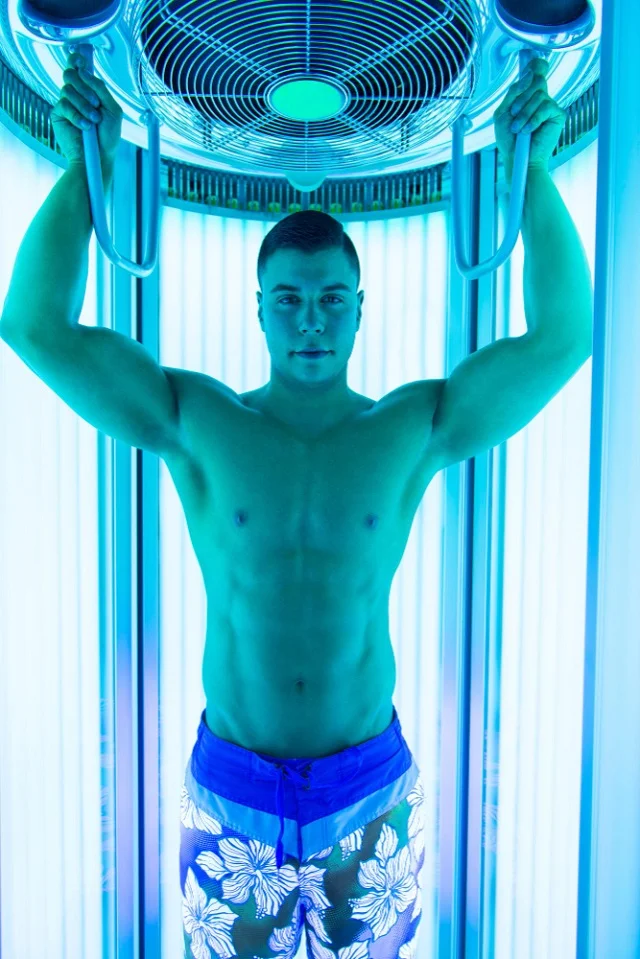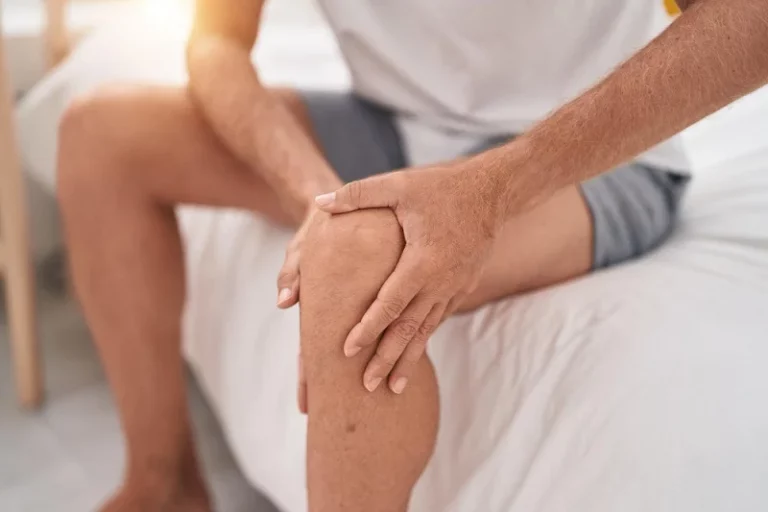Cryotherapy To Help Aid Muscle Recovery 2023
Are you tired of dealing with sore muscles after an intense workout? Look no further! Cryotherapy for muscle recovery is the ultimate solution. This cutting-edge technique involves subjecting your body to freezing temperatures, providing numerous benefits for athletes and fitness enthusiasts, including cryotherapy for injury prevention and athletic recovery.
Whole-body cryotherapy (WBC) is one popular method that utilizes different cryotherapy models. During a session, you’ll be exposed to cryo stimulation, which helps reduce inflammation and promote healing. Forget about old-school cold baths or lengthy recovery periods – cryotherapy offers a quick and effective way to bounce back from any training session.
By incorporating cryotherapy into your exercise protocol, you can experience enhanced recovery rates and improved performance, making it a valuable tool for athletic recovery. This innovative approach will take your muscle recovery and athletic performance to new heights, whether an intake session or an end-of-training WBC session. So why wait? Give cryotherapy a try today and witness the remarkable results it brings to your baseline strength and vitality!
Benefits of Cryotherapy for Faster Muscle Recovery
Cryotherapy is gaining popularity to speed up recovery after intense workouts or sports activities. Athletes and fitness enthusiasts are turning to this cold therapy technique to help decrease muscle soreness and fatigue, allowing them to train more frequently and push their limits. Let’s explore the benefits of cryotherapy in detail.
Speeding Up Recovery Process
One of the critical advantages of cryotherapy for muscle recovery is its ability to accelerate the healing process. When exposed to frigid temperatures, the body constricts blood vessels in the affected area. This constriction reduces swelling, inflammation, and pain, promoting faster healing. By facilitating better blood flow once the treatment is complete, cryotherapy helps deliver oxygen and nutrients to damaged muscles, aiding in their repair.
Decreasing Muscle Soreness and Fatigue
Intense physical activity often leads to muscle soreness that can hinder subsequent training sessions. Cryotherapy offers a solution by effectively reducing post-workout muscle soreness and fatigue. The cold temperatures numb nerve endings in the muscles, providing temporary pain relief and minimizing inflammation. As a result, athletes experience less discomfort during recovery periods and can bounce back quicker for their next training session.
Enhanced Training Frequency
Cryotherapy allows athletes to increase their training frequency without compromising performance or risking injury by minimizing muscle soreness and fatigue. With shorter recovery times between workouts, individuals can engage in more rigorous exercise routines or participate in multiple sporting events within a shorter timeframe.
Improved Performance Levels
Regularly incorporating cryotherapy into a training regimen can positively impact overall performance levels. By reducing inflammation and swelling associated with intense physical activity, athletes experience improved joint mobility and flexibility. This enhanced range of motion enables individuals to move more freely during workouts or competitions, enhancing their athletic abilities.
Increased Endurance
Another benefit of cryotherapy for muscle recovery is its potential to increase endurance levels. By subjecting the body to extremely cold temperatures, cryotherapy stimulates the release of endorphins and other feel-good hormones. These natural chemicals help reduce pain and boost mood and energy levels. With increased energy and a more positive mindset, athletes can push through physical barriers and achieve higher endurance levels during training sessions or competitions.
Effectiveness of Cryotherapy in Enhancing Athletes’ Recovery Speed
Cryotherapy has gained significant attention in sports medicine due to its potential effectiveness in enhancing athletes’ recovery speed. Numerous studies have explored the benefits of cryotherapy on athletes, particularly elite athletes, and distance runners, and have found promising results.
One of the key findings from these studies is that cryotherapy can significantly improve athletes’ recovery time between training sessions. Cold exposure during cryotherapy triggers a physiological response in the body, leading to various positive effects. One such effect is the stimulation of endorphin release, which helps reduce pain and enhances mood. This natural analgesic effect not only aids in alleviating muscle soreness but also contributes to the overall well-being of athletes.
Incorporating cryotherapy into their routine has been shown to profoundly impact athletic performance. Athletes who regularly undergo cryotherapy experience improved physical performance and reduced risk of injuries. The cold temperatures help reduce inflammation and swelling, allowing muscles to recover more efficiently. By minimizing tissue damage caused by intense training sessions, cryotherapy enables athletes to train harder and more frequently without compromising their recovery process.
Timing effects also play a crucial role. Studies have demonstrated that immediate post-exercise cryotherapy can minimize muscle damage and soreness. By initiating the cooling process immediately after intense exercise, athletes can accelerate their recovery and be ready for subsequent training sessions sooner.
Furthermore, group effects have been observed when multiple individuals undergo cryotherapy together. The shared experience creates a supportive environment that fosters camaraderie among athletes. This group dynamic often leads to increased motivation and adherence to training regimens, ultimately benefiting everyone involved.
It is important to note that while cryotherapy has shown promise in enhancing recovery speed for athletes, individual responses may vary. Age, fitness level, and specific sport or activity should be considered when incorporating cryotherapy into an athlete’s recovery plan. Consulting with a sports medicine professional or physiotherapist can help determine the most appropriate approach for each individual.
Cryotherapy as a Tool for Managing Sports Injuries
Cryotherapy is commonly used in the RICE (Rest, Ice, Compression, Elevation) protocol for managing sports injuries. It involves the application of extreme cold to the affected area, which can help minimize swelling and inflammation. By reducing these symptoms, cryotherapy is crucial in facilitating faster rehabilitation and aiding athletes in their return to sports activities.
One of the primary benefits of cryotherapy is its ability to target specific areas through local cryotherapy or whole-body treatment using cryotherapy chambers. Local cryotherapy allows athletes to focus on particular injured muscles or joints, providing intense cold therapy directly to those areas. On the other hand, whole-body cryotherapy involves exposure to freezing temperatures in a controlled environment.
Cold compression therapy is another form of cryotherapy that combines cold treatment with compression. This method helps reduce pain and inflammation while promoting blood circulation and muscle recovery. Athletes can benefit from cold compression therapy devices that simultaneously provide targeted cooling and compression.
Cold water immersion, or ice baths, is a popular form of cryotherapy athletes use after intense training sessions or competitions. By immersing themselves in ice-cold water for a specific duration, athletes experience vasoconstriction followed by vasodilation once they exit the bath. This process aids in flushing out metabolic waste products from muscles and reducing inflammation.
In recent years, sports science has explored various cryotherapy models to determine their effectiveness in managing different injuries. Studies have shown positive outcomes when utilizing cold exposure techniques like localized cooling pads or even applying ice directly to an injury site.
Cryotherapy has proven particularly beneficial for acute injuries such as sprains or strains. Its ability to reduce swelling and numb pain helps create an optimal environment for healing. However, it’s important not to rely solely on cryotherapy but incorporate it into a comprehensive treatment plan that includes rest, physical therapy, and other appropriate interventions.
Exploring the Efficiency of Cryotherapy in Accelerating Recovery
Research suggests that cryotherapy can accelerate the recovery process by improving blood circulation. Cold exposure triggers vasoconstriction followed by vasodilation, increasing oxygen supply to muscles and tissues. This enhanced blood flow promotes nutrient delivery and waste removal, aiding tissue repair.
One of the key benefits of cryotherapy for muscle recovery is its ability to enhance blood circulation. Our blood vessels constrict when exposed to cold temperatures, reducing blood flow to the extremities. However, once we warm up again, a process known as vasodilation occurs where our blood vessels expand, allowing for increased blood flow throughout the body. This cycle of vasoconstriction and vasodilation helps improve oxygen supply to muscles and tissues, which is crucial for their recovery.
The improved blood circulation resulting from cryotherapy leads to better nutrient delivery and waste removal within the body. During physical activity or exercise, our muscles require an adequate supply of nutrients such as glucose and amino acids to function optimally. Waste products like lactic acid can accumulate in our muscles during intense workouts, causing fatigue and soreness. By promoting efficient blood flow, cryotherapy helps deliver essential nutrients while removing metabolic waste products more effectively.
Several studies have investigated the effects of cryotherapy on exercise recovery and have shown significant improvement in various experimental conditions. For example, a study published on PubMed found that water immersion cryotherapy led to a significant reduction in muscle soreness compared to passive recovery after eccentric exercise. Another study examined the impact of whole-body cryotherapy on post-exercise recovery among trained participants and reported positive outcomes regarding perceived muscle soreness reduction.
Moreover, cryotherapy has been recommended as an effective method for enhancing recovery following intense training sessions or physical activities. Athletes often incorporate cryotherapy into their fitness routines due to its potential benefits in reducing inflammation and accelerating healing. The stimulation provided by cold therapy aids in the repair and regeneration of damaged muscle fibers, allowing individuals to bounce back quicker from strenuous workouts.
Understanding the Impact of Cryotherapy on Aerobic and Anaerobic Performances
Cryotherapy has emerged as a game-changer in the realm of muscle recovery, with its ability to enhance both aerobic and anaerobic performances. This cold therapy technique has been found to have significant positive effects on various aspects of physical performance, influencing endurance capacity during prolonged activities and improving neuromuscular function.
One area where cryotherapy demonstrates its prowess is in enhancing aerobic performance. Intense endurance activities can lead to exercise-induced oxidative stress and hamper overall performance. However, cryogenic treatment helps combat this oxidative stress by reducing inflammation and promoting antioxidant activity. As a result, athletes who undergo cryotherapy experience improved endurance capacity, allowing them to perform at higher levels for extended periods.
Cryotherapy has shown considerable benefits for anaerobic performance. High-intensity exercises often lead to muscle damage and fatigue, limiting an individual’s ability to perform at their best. Cold therapy aids in decreasing muscle damage by constricting blood vessels, thereby minimizing inflammation and swelling. By reducing these factors contributing to muscle fatigue, athletes can push themselves further during intense workouts or competitions.
Research studies have consistently demonstrated cryotherapy’s positive influence on aerobic and anaerobic performances. In one study comparing athletes who underwent cryotherapy sessions with those who did not, significant differences were observed in their performances. The group that received cryotherapy exhibited enhanced endurance compared to their counterparts who did not receive cold therapy.
Moreover, another study explored the impact of whole-body cryotherapy on neuromuscular performance. The results revealed that participants who engaged in cold therapy experienced improved muscular power output compared to those who did not undergo cryogenic treatment.
Alleviating Muscle Soreness and Damage with Cryotherapy
Cryotherapy has emerged as a popular method for muscle recovery, effectively reducing post-exercise muscle soreness (DOMS). By subjecting the body to extremely cold temperatures, cryotherapy helps alleviate the discomfort associated with sore muscles while aiding in their repair.
The main mechanism behind cryotherapy’s effectiveness lies in its ability to constrict blood vessels. As the body is exposed to freezing temperatures, the blood vessels narrow, reducing inflammation and preventing further damage. This constriction also helps minimize swelling and edema, contributing to a faster recovery process.
Regular cryotherapy sessions can significantly aid in recovering from intense workouts or competitions. The cold temperatures not only provide immediate relief from muscle soreness but also promote long-term healing. By enhancing blood circulation after each session, cryotherapy stimulates the delivery of oxygen and nutrients to damaged muscles, facilitating their repair.
In addition to its impact on blood vessels, cryotherapy positively affects the skin. The extreme cold causes vasoconstriction in the skin’s surface layers, which triggers a response from thermoreceptors. This response prompts the body to increase its production of collagen and elastin, two essential proteins for maintaining healthy skin. Consequently, regular cryotherapy sessions can improve overall skin health while supporting muscular recovery.
To better understand how cryotherapy aids in muscle recovery, let’s delve into its effects on pain perception and damage repair:
Pain Perception:
Cryotherapy directly influences pain perception by numbing nerve endings due to extreme cold exposure. This numbing effect immediately relieves muscle soreness during and after each session. Cryotherapy temporarily blocks pain signals sent by nerve fibers, allowing individuals to experience reduced discomfort without relying solely on medication or traditional methods such as applying ice packs.
Damage Repair:
Muscle damage is an inevitable consequence of intense physical activity or exercise routines. However, regular cryotherapy sessions can significantly speed up the repair process. The cold temperatures prompt the body to release anti-inflammatory proteins, reducing swelling and promoting tissue regeneration. This accelerated healing can help athletes and fitness enthusiasts bounce back quicker from strenuous workouts or competitions.
The Power of Cryotherapy in Optimizing Muscle Recovery
In conclusion, cryotherapy has proven to be a powerful tool for enhancing muscle recovery and optimizing athletic performance. Its benefits include faster recovery times, improved injury management, reduced muscle soreness, and enhanced aerobic and anaerobic performances.
Athletes can benefit greatly from incorporating cryotherapy into their training regimen. By subjecting their bodies to extremely cold temperatures, they can speed up the healing process of their muscles and reduce inflammation. This allows them to recover more quickly between workouts or competitions, enabling them to push harder and achieve better results.
Moreover, cryotherapy has shown great effectiveness in managing sports injuries. Whether it’s a sprain, strain, or even post-surgical rehabilitation, the cold temperatures help alleviate pain and promote healing. Athletes can rely on cryotherapy as a non-invasive alternative to traditional injury treatment methods.
The efficiency of cryotherapy in accelerating recovery cannot be overstated. It stimulates blood circulation throughout the body and triggers the release of endorphins, which are natural painkillers. As a result, athletes experience reduced muscle soreness after intense physical activity.
Furthermore, cryotherapy has been found to positively impact both aerobic and anaerobic performances. By improving oxygen delivery to the muscles and reducing lactic acid buildup during exercise, athletes can enhance their endurance and power output.
To fully harness the benefits of cryotherapy for muscle recovery, it is essential to incorporate it into a comprehensive training program that includes proper nutrition and rest. Consistency is key when utilizing this technique for optimal results.
Incorporating cryotherapy into your routine can significantly improve your athletic performance by speeding up your recovery time and reducing muscle soreness. This powerful tool can optimize your training efforts and achieve your fitness goals.
FAQs
How often should I undergo cryotherapy for muscle recovery?
The frequency of cryotherapy sessions for muscle recovery depends on your training intensity and goals. It is recommended to consult with a cryotherapy specialist who can tailor a schedule that suits your specific needs.
Can cryotherapy help with muscle injuries?
Yes, cryotherapy can be beneficial in managing muscle injuries by reducing inflammation and promoting healing. However, it should be used in conjunction with proper medical treatment and guidance from healthcare professionals.
Can I combine other recovery methods with cryotherapy?
Absolutely! Cryotherapy can complement other recovery methods such as massage therapy, stretching exercises, and proper nutrition. Combining multiple approaches can enhance your overall recovery process.
How soon can I expect to see results from cryotherapy for muscle recovery?
Results may vary depending on individual factors such as fitness level and the nature of the injury or muscle soreness being addressed. However, many athletes report experiencing noticeable improvements in their recovery time within a few sessions of incorporating cryotherapy into their routine.
Can I use cryotherapy before exercise to prevent muscle soreness?
While some athletes find pre-exercise cryotherapy helpful in reducing post-workout muscle soreness, research on its effectiveness for this purpose is still limited. It is best to consult with a healthcare professional or cryotherapy specialist to determine the most suitable approach for your specific needs.
Is cryotherapy only beneficial for athletes?
No, cryotherapy can be beneficial for individuals of all fitness levels. Whether you’re an athlete looking to optimize performance or seeking relief from muscle soreness and injuries, cryotherapy can provide valuable benefits.




